The 1970’s. Why didn’t people pick up after their dog? How do you make someone perform such a foul task when they’ve never had to do it before?
Before Dogs Were a Problem
Taking a look back at the 1800s, bustling urban cities across America were, although booming, also drowning in horse manure. Horses had been the dominant mode of transportation for thousands of years prior, but with the increasing needs for travel in such a highly condensed area, the brown stuff was becoming a real problem. In New York City alone, horses were producing an average of 3 million pounds of manure per day! Not only was the situation unsightly (and un-smelly), but the rate of disease was ever increasing and epidemics like yellow fever seemed to flow every so freely through the filth-filled air.
Just when there seemed to be no end in sight, the invention of the automobile came just in time and by the 1920’s, most horses were replaced – thus the great horse manure crisis was finally over.
The remaining piles of horse droppings were hauled away and professional street sweepers were put in place to help keep the roads clean – along with ongoing sewage treatments advancements – poop pollution seemed to be a thing of the past.
When Pets Became Popular
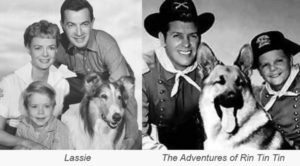 The general idea of pet ownership became noticeably popular in the 1950’ right after World War II. It was a time when the average family household income was at an all-time high and that image of a newly built suburban home with the white picket fence and picturesque green backyard was assuredly within financial reach. Popular tv shows like Lassie and The Adventures of Rin Tin Tin taught viewers the true loyalty a dog could offer, not just as a companion, but as a well integrated family member. Even the spooky family on the The Munsters had a pet – some sort of dragon/dinosaur combination – but nevertheless it brought across a similar message. It wasn’t too long until city dwellers wanted in on some canine comfort too.
The general idea of pet ownership became noticeably popular in the 1950’ right after World War II. It was a time when the average family household income was at an all-time high and that image of a newly built suburban home with the white picket fence and picturesque green backyard was assuredly within financial reach. Popular tv shows like Lassie and The Adventures of Rin Tin Tin taught viewers the true loyalty a dog could offer, not just as a companion, but as a well integrated family member. Even the spooky family on the The Munsters had a pet – some sort of dragon/dinosaur combination – but nevertheless it brought across a similar message. It wasn’t too long until city dwellers wanted in on some canine comfort too.
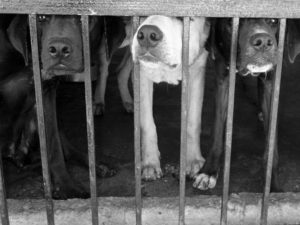 In response to the sudden demand for pups, mid-western farmers took the opportunity to expand their business past the standard meat/dairy/crop biz and began opening up a stream of puppy mills. The opening of new and eager pet shops quickly followed ready to sell the living “products”… But it wasn’t long until the supply far outweighed the demand. Already by the 1960’s, stores were finding themselves with too many dogs and cats – millions of un-adopted animals were forced to be euthanized. Spay & neuter clinics came into the picture and people were highly encouraged to get their pets fixed.
In response to the sudden demand for pups, mid-western farmers took the opportunity to expand their business past the standard meat/dairy/crop biz and began opening up a stream of puppy mills. The opening of new and eager pet shops quickly followed ready to sell the living “products”… But it wasn’t long until the supply far outweighed the demand. Already by the 1960’s, stores were finding themselves with too many dogs and cats – millions of un-adopted animals were forced to be euthanized. Spay & neuter clinics came into the picture and people were highly encouraged to get their pets fixed.
Status of New York City
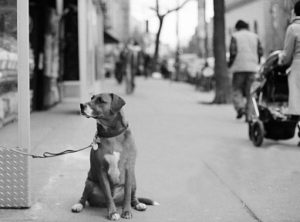 The 1970’s was a decade when shelter populations and euthanasia rates were at its peak: New York City was getting close to 8 million people with at least 600,000 dogs roaming the streets (including both stray and homed). Collectively these canines produced an incredible 500,000 lbs of manure onto public pathways every day. Although reminiscent of the horse manure crisis, the biggest difference this time around was that the majority of the poop was now on the sidewalks. Every step was a risk, and the severely limited budget of the city in the 70’s would not allow its cleaning services to extend past the streets. Knowing full well dogs couldn’t be walked on a road with speeding cars and cyclists moving every which way, where else could they go? More importantly, where could their poo go?
The 1970’s was a decade when shelter populations and euthanasia rates were at its peak: New York City was getting close to 8 million people with at least 600,000 dogs roaming the streets (including both stray and homed). Collectively these canines produced an incredible 500,000 lbs of manure onto public pathways every day. Although reminiscent of the horse manure crisis, the biggest difference this time around was that the majority of the poop was now on the sidewalks. Every step was a risk, and the severely limited budget of the city in the 70’s would not allow its cleaning services to extend past the streets. Knowing full well dogs couldn’t be walked on a road with speeding cars and cyclists moving every which way, where else could they go? More importantly, where could their poo go?
Another Epidemic?
It seemed cities across America were facing a new poop epidemic – only this time with dogs.
Were city residents in danger of a new widespread disease that could spread from these small piles of excrement? One woman by the name Fran Lee seemed to think so.
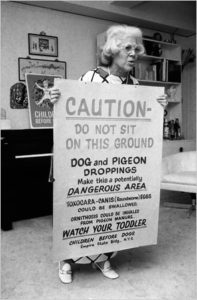 Fran Lee, formerly known as Frances Lederman, was an actress throughout the earlier part of her life and later became a large public figure in the area of public health and safety issues for New York. Lee founded the organization, Children Before Dogs, promoting the absence of any type of waste on the sidewalks and warning others of the potential risks that dogs can bring when allowed to defecate out in the open.
Fran Lee, formerly known as Frances Lederman, was an actress throughout the earlier part of her life and later became a large public figure in the area of public health and safety issues for New York. Lee founded the organization, Children Before Dogs, promoting the absence of any type of waste on the sidewalks and warning others of the potential risks that dogs can bring when allowed to defecate out in the open.
Lee strongly believed (and preached) to others that dogs should only be allowed to relieve themselves on the owner’s property. Since most New Yorkers didn’t have the privilege of owning a backyard, inside the home would be the only choice for evacuation. Lee claimed that both dog urine and feces were too dangerous for the public and that dogs and, although could still be walked in public, should have their bathroom habits restricted to laid out newspapers or various sorts of padding on one’s own floor.
On more than one occasion, Lee would gather several others like-minded people to parade the streets, strutting posters tied around their necks with writings such as “Caution! Do not sit on the ground! Dog and pigeon droppings make this potentially dangerous area. Toxocara-carria eggs could be swallowed.”
Although some might consider her efforts a bit extreme, there was some truth to it. Toxocara, a.k.a. roundworms, is a common parasite found in both dogs and cats. An infected animal could lay millions of eggs in their stool within a 24 hour period, further spreading the virus. Once infected, the parasites thrive in the intestinal tract, absorbing nutrients, disrupting the digestion process, and damaging the inner lining of the intestine. A considerable amount of cases have proven that a human contracting roundworm could experience severe health effects – and in rare cases, even blindness.
But could you possibly convince pet owners to collectively train every dog to only go inside the house, contradicting that ingrained wild instinct to squat outdoors wherever they pleased? And more importantly, wouldn’t exposing a family to the entirety of their dog’s urine and feces in their own home be the very thing that Children Before Dogs had been fighting against?
By now, you may be wondering why walkers didn’t just pick up after theirs dogs to begin with? There! Crisis averted! But keep in mind, this was a different time. The idea of picking up that brown gooey substance that just came out of your dog’s butt was seen as a disgusting, undignified thing to do. Convenient portable pooper scoopers and plastic doggie bags hadn’t been invented yet. And even if someone were to dare to pick it up, where would it go? The public receptacle for everyone else to see? That notion at the time seemed absurd.
Introducing The Pooper Scooper Law
The first poop scoop law proposed, which would legally enforce walkers to pick up the poop, had already been passed in Nutley, New Jersey in 1971. Nutley was a small suburban town where dogs droppings were mostly deposited in one’s own backyard, but the ordinance made it understood that in was not appropriate to leave your dog’s outgoings on another person’s property and therefore needed to be picked up. But the city, specifically New York, was a different kind of setting – the sidewalks only belonged to the city itself and such a bold law would not be as easy to pass in such a heavily populated and diverse area.

The mayor at the time, John Lindsay, perhaps not as extreme as Fran Lee, did agree that the dog waste was an environmental hazard and, embarrassing or not, needed to be picked up. He like many others wanted to be involved in the current environmental revolution that was going on. 1970 was the year that seemed to have started it all: Richard Nixon set up the Environmental Protection Agency, the Clean Water Act and Clear Air Act were set into place, and Earth Day was officially declared by United States Senator Gaylord Nelson. Continuing down this green path, Lindsay decided to appoint assemblyman, Jerome Kretchmer, as the city’s new Administrator of Environmental Protection, and his first order of business was to propose the new poop scoop law, also known to New York as Public Health Law 1310.
The Backlash
A quote from a New York’s Dog Owners’ Guild representative showed the angry response to the law that was echoed throughout the city – “Like the Jews of Nazi Germany, we citizens, including old infirm, and are being humiliated by being forced to pick up excrement from the gutter”. Dog owners were feeling singled out and the law would only add an extra burden, not to mention mortifying duty, on top of the already heavy responsibility of raising a helpless animal out of the pure generosity in their heart .
People would argue that modern horses pulling carriages down the streets had their manure picked up by the city on a regular basis, so why should dog owners have to pick up their own? There was also the universal fear that if a pooper scooper law were to be put in place, it would open the floodgates, allowing the city to put more and more restrictions on dog ownership leading up to the eventual abolishment of dogs altogether. Both animal activists and the ASPCA saw a poop scooper law as the first step to banning dogs. It became such a controversial topic that led to landing on the cover of the New York Times during Lindsay’s administration.
Needless to say, the initial proposal was quickly shut down. Kretchmer stepped down from the EPA and Lindsay too left mayor office in 1973. Was this the end of the pooper scooper fight?
Despite the law being turned down is less time than it was introduced, it was hard to ignore the that the dog poo issue was still a huge problem. In 1974, the National League of cities reported that 60% of American mayors receive the most complaints concerning doggie doo. It was still everywhere, and locals were not happy about it.
Alternatives To The Law
Perhaps the dog poop problem could be solved without the strict enforcement of a law? A new group, under the support of Mayor Abraham Beame, contrived the idea to have dog owners train their pups to walk along the curb and defecate into the sewer drains. Sounds simple enough? Well that is except for the fact that many dogs found the grates uncomfortable and refused to walk over let alone do their business over such an odd material.
Dr. Patricia Livingston, the professor of health at NYU at the time, believed that if there is impose one to pick up, then the public needs to be educated on the matter. Volunteering at the Carl Schurz Park, well-known for its community events and environmental efforts, Livingston would accompany dog walkers on their stroll so that when the dog did its business, she would be ready to demonstrate how easy it is to bag up the pile of poo.
Time To Try Again

In 1978, there was a new mayor in town willing to step up to the plate – Ed Koch. He had been impressed by recent pooper scooper inventions – such as the Dogmatic by Robert Veech where poop could be picked up without your hands going anywhere near it. He strongly felt that with inventions like these, leaving the responsibility of eradicating dog poop up to the owner was completely doable. Koch appointed Senator Franz S. Leichter and Assemblyman Edward Lechner to try the law again. There were still mixed feelings in the courts, but with a stronger, convincing argument, majority ruled with two-thirds State Assembly, and slightly more than half the vote in the Senate.
Social Pressures
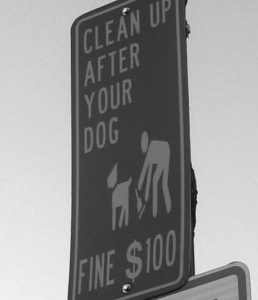 Dog walking businesses became very popular in the following months as people didn’t want to feel judged while walking their own dog. Others walked their dogs less or not at all. Those that braved the streets felt nervous and were often seen ridiculed if they were not seen picking up the doggie doo right away. Signs were everywhere, “Clean up after dog, maximum fine $100”. It felt like those signs were giving passerbys the right to scold dog owners and point out when a turd was not attended to. In a way, that’s exactly what Koch wanted all along. Although ticketing could only be given by law enforcement, Koch wanted peer pressure to play the pivotal role in making dog owners more responsible. And it worked! People were soon working it into the routine – many abandoning the commercial scooping contraptions and resorting to plastic grocery bags that would serve the same outcome. The law successfully increased the number to upwards of 60% of dog owners now picking up (interestingly a statistic that still exists today).
Dog walking businesses became very popular in the following months as people didn’t want to feel judged while walking their own dog. Others walked their dogs less or not at all. Those that braved the streets felt nervous and were often seen ridiculed if they were not seen picking up the doggie doo right away. Signs were everywhere, “Clean up after dog, maximum fine $100”. It felt like those signs were giving passerbys the right to scold dog owners and point out when a turd was not attended to. In a way, that’s exactly what Koch wanted all along. Although ticketing could only be given by law enforcement, Koch wanted peer pressure to play the pivotal role in making dog owners more responsible. And it worked! People were soon working it into the routine – many abandoning the commercial scooping contraptions and resorting to plastic grocery bags that would serve the same outcome. The law successfully increased the number to upwards of 60% of dog owners now picking up (interestingly a statistic that still exists today).
An Unexpected Result
In what was an initial positive move, a sadly unexpected consequence had come out of it. Shockingly, many owners were quick to give up ownership of their dog as they weren’t up for the task of poop pickup. In fact, the ASPCA claimed that within the first few weeks, the number of stray and shelter dogs had doubled. Shelters were filling up fast and so were the streets. The practice of euthanasia would sadly go on.
But something else was happening… dog biting rates were decreasing, well-fashioned leashes were seen attached to dog collars as oppose to a sad looking piece of rope. It seemed as though the remaining dog owners, the ones that were willing to pick up for their dog, were the ones that were taking better care of their pups. Perhaps the poop scoop law took it a step further than just keeping the pavements clean, but revealed the true loving dog parents throughout the city.
The poop scoop law would be passed in many other cities across the U.S., making it a county-wide understanding that picking up is just another job requirement on the dog owner’s list.
Learn more about the details of how a city could implement new social standards on 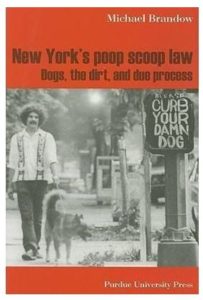 a particular dog-loving subculture and the full history of the legislative process that had taken. Read the fascinating book: New York’s Poop Scoop Law: Dogs, the Dirt, and Due Process by Michael Brandow.
a particular dog-loving subculture and the full history of the legislative process that had taken. Read the fascinating book: New York’s Poop Scoop Law: Dogs, the Dirt, and Due Process by Michael Brandow.

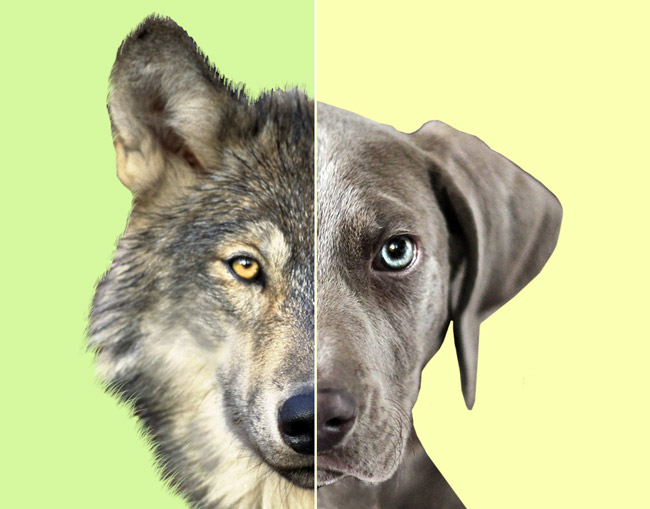 How the Dog Became the First Domesticated Animal
How the Dog Became the First Domesticated Animal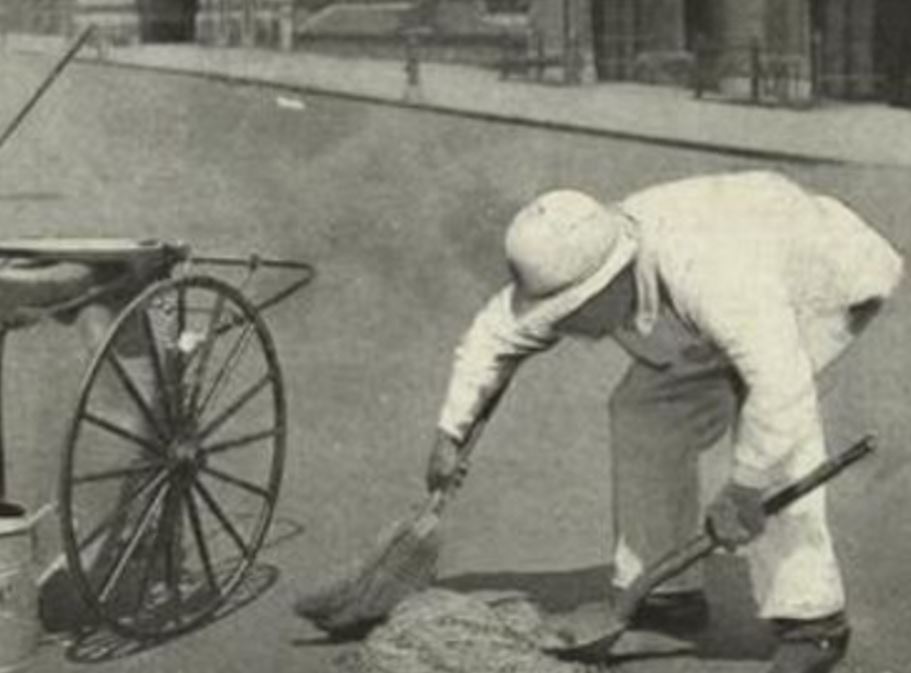 Dirt-Carters to Crossing Sweepers to White Wings… The Original Pooper Scoopers
Dirt-Carters to Crossing Sweepers to White Wings… The Original Pooper Scoopers